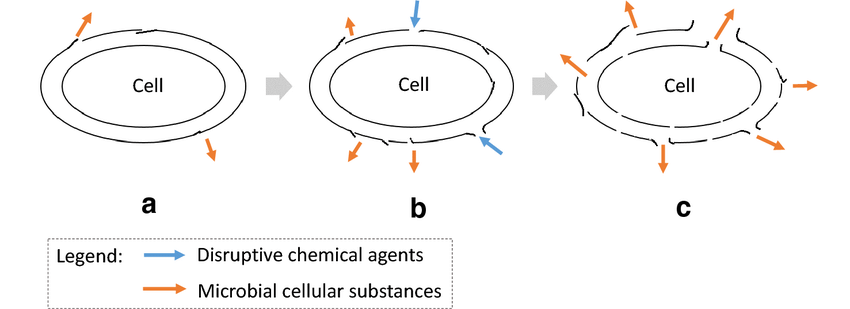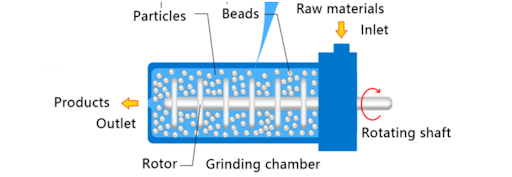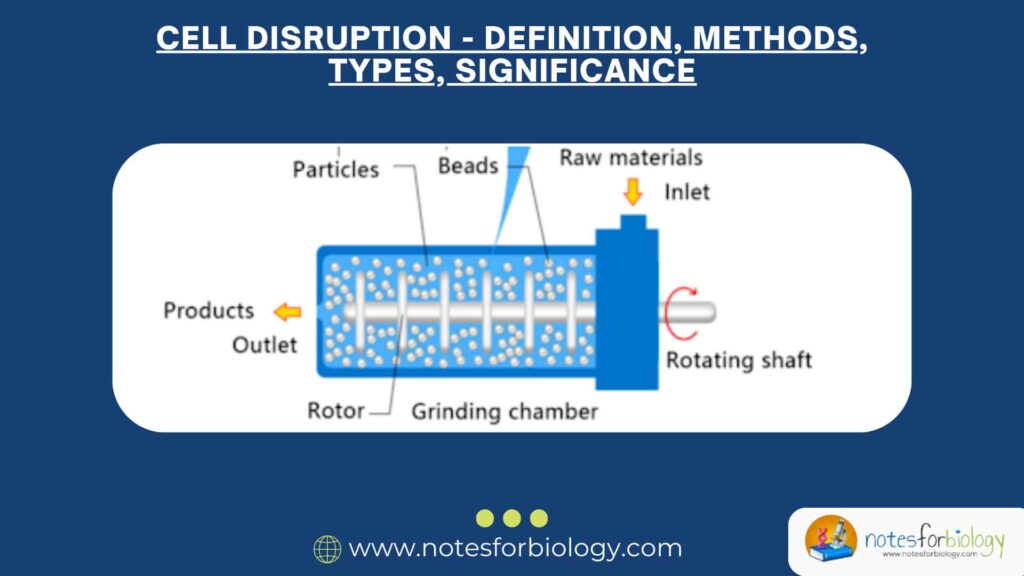What is Cell Disruption?
Cell disruption is the process of breaking open the outer shell of a cell, such as the cell wall or membrane, to release everything inside. Think of it like cracking open a tiny balloon to get the juice out. Inside cells, there are many important substances like proteins, enzymes, DNA, RNA, and other molecules essential for life and scientific study.
This process is very important because these substances are trapped inside the cell and cannot be used or studied unless the cell is opened carefully. Scientists, researchers, and industries use cell disruption to study these molecules or to produce medicines, vaccines, enzymes, and biofuels.
Different cells have different “shells” some are very tough, like plant cells with thick walls, while others, like animal cells, have softer membranes. Because of these differences, the way we break open these cells varies, depending on the cell type and what we want to get out of it.
Summary of Cell disruption
- Cell disruption is the process of breaking open cells to extract intracellular components while preserving their functionality.
- It can be achieved through mechanical methods (like bead beating and ultrasonication) or non-mechanical methods (such as enzymatic or chemical lysis).
- This technique is crucial for biotechnology, microbiology, and pharmaceutical applications, enabling the study and utilization of cellular contents.
Table of Contents
Representation of Cell disruption by sonication

Types of Cell Disruption
Broadly, cell disruption is classified into two major types based on the approach used:
Mechanical (Physical) Methods
These methods use physical forces like grinding, shaking, or pressure to break the cells. They are especially useful for tough cells like bacteria, yeast, and plant cells which have strong walls or membranes.
Non-Mechanical Methods
These methods use chemical agents, enzymes, or environmental changes to gently dissolve or weaken the cell structure. These are often preferred for soft cells like mammalian or animal cells, where strong physical forces might damage the valuable internal molecules.
Methods of Cell Disruption
1. Mechanical (Physical) Methods
a. Bead Milling (Bead Beating)

Imagine placing tiny glass or steel beads into a small container along with the cell sample. The container is shaken rapidly so the beads collide with cells, breaking them open by impact and grinding. This is very effective for hard-to-break cells like fungi and bacteria. It’s simple, fast, and commonly used in labs for small to medium samples.
b. High-Pressure Homogenization
Here, the cell mixture is forced at extremely high pressure through a narrow space. The sudden change in pressure and the resulting strong forces cause cells to burst open. This method is excellent for large scale production and is widely used in industries making vaccines or enzymes. It is efficient, but requires specialized equipment.
c. Sonication
This method uses ultrasound waves high-frequency sound waves beyond human hearing that cause tiny bubbles to form and collapse in the liquid. These collapsing bubbles generate shock waves that break the cell membranes. Sonication is great for small sample volumes, especially bacteria. But too much sonication can heat the sample and damage sensitive proteins.
d. French Press
Cells are pushed through a tiny opening under very high pressure. The sudden pressure drop causes the cells to rupture. This method is very effective for bacteria and algae cells but is typically used for small sample sizes.
e. Grinding with Liquid Nitrogen
Cells are frozen rapidly using liquid nitrogen, which forms ice crystals inside them. Then, using a mortar and pestle, the frozen sample is ground into a powder. The ice crystals physically pierce and break the cells apart. This method is particularly useful for plant tissues and other tough materials.
2. Non-Mechanical Methods
a. Chemical Lysis
Certain chemicals called detergents or solvents can dissolve the cell membrane’s fats and proteins, causing the cell to break open. For example, SDS and Triton X-100 are common detergents used in labs. This method is easy and useful but chemicals may sometimes harm the proteins you want to study.
b. Enzymatic Lysis
Specific enzymes target and degrade parts of the cell wall or membrane. For example, lysozyme breaks down bacterial cell walls, while cellulase attacks plant cell walls. Enzymatic lysis is gentle and great when you want to keep proteins active and undamaged.
c. Osmotic Shock
Cells are placed in a solution where the water concentration outside is higher than inside the cell. Water rushes in, making the cell swell and eventually burst. This works well for cells without strong walls, like red blood cells.
d. Freeze-Thaw Cycles
By freezing and thawing cells repeatedly, ice crystals form and expand inside, damaging membranes and causing cells to burst. It is a mild method often used in labs for sensitive samples but is slow compared to others.
e. Electroporation

Short pulses of electricity create tiny holes in the cell membrane. While it’s mainly used to introduce DNA into cells in genetic studies, it can also be used to release internal components. It’s precise and useful for certain delicate cells.
Significance of Cell Disruption
- Accessing Valuable Biomolecules
Inside cells are enzymes, proteins, DNA, and other molecules crucial for scientific research, medicine, and industry. Cell disruption frees these molecules so they can be studied, purified, and used. - Pharmaceutical and Vaccine Production
Many medicines like insulin or vaccines are produced by genetically engineered cells. Cell disruption releases the medicine-producing molecules from inside these cells. - Biochemical Research
Scientists study proteins and enzymes to understand how they work. Without breaking cells, they can’t isolate or analyze these molecules. - Molecular Biology and Genetic Engineering
DNA and RNA must be extracted from cells for cloning, PCR, and gene editing. Cell disruption is the first essential step. - Biofuel Production
Microorganisms like algae store oils inside their cells that can be converted to biofuels. Disruption releases these oils efficiently. - Food and Agriculture
Extraction of flavors, vitamins, and pigments from plants or microbes requires cell disruption. - Cosmetics and Nutraceuticals
Active compounds beneficial for skin or health supplements come from inside cells, accessed by disruption.
In short, without effective cell disruption, we couldn’t produce many essential products or advance scientific knowledge.
Conclusion
Cell disruption is a fundamental step in biotechnology, microbiology, and many industrial processes. It involves breaking open cells to release their inner components for research or production. The two main approaches are mechanical methods, which use physical force, and non-mechanical methods, which use chemicals, enzymes, or environmental changes.
Choosing the right method depends on the type of cell, the scale of operation, and the sensitivity of the molecules you want to preserve. Understanding and applying the correct cell disruption technique helps ensure that valuable substances inside cells are safely and efficiently recovered.
This process supports breakthroughs in medicine, biofuel, food science, and many other fields, making cell disruption a cornerstone of modern biological science.
Frequently Asked Questions (FAQs)
What are cell dirsuption techniques?
Cell disruption techniques are methods used to break open cells to release their contents (e.g., proteins, DNA). They include mechanical methods (e.g., sonication, bead beating) and non-mechanical methods (e.g., enzymes, detergents). The choice depends on cell type (bacteria, plant, animal) and the desired product.
What is ultrasonic cell disruption?
Ultrasonic cell disruption uses high-frequency sound waves to create vibrations that break open cells, releasing their contents. It is commonly used for small-scale lab samples like bacteria and cultured cells.
What is sonication cell disruption?
Sonication cell disruption uses high-frequency sound waves (ultrasound) to break open cells by creating tiny bubbles that violently collapse (cavitation), releasing cellular contents. It’s a fast, mechanical method ideal for small samples like bacterial suspensions or tissue homogenates.
Related Articles




